How Did Benito Mussolini Die? The Demise of Italy’s Fascist Dictator
Benito Mussolini was one of the world’s major leaders at the onset of the Second World War. Becoming Italy’s prime minister in 1922, he’d sought to grow the country’s influence and power, but as Europe broke out into conflict and Italy struggled to increase its military might, it soon became clear that he and his Fascist supporters were in well over their heads.
By 1945, things were looking grim, and Mussolini knew he needed to escape. As history would show, he was unsuccessful in this, with partisans tracking down, arresting and executing Italy’s deposed dictator.
Italy faced several struggles throughout World War II
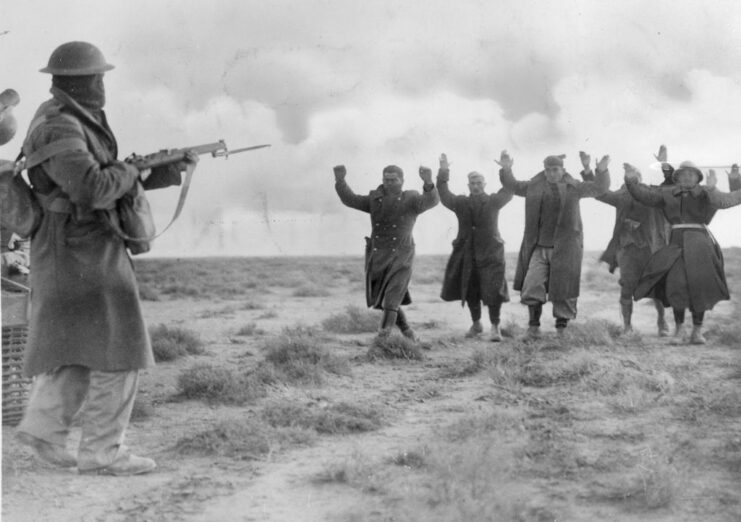
Italy’s involvement in World War II was defined by its alliance with Germany. Benito Mussolini sought to recreate the Roman Empire‘s glory, aligning with the Führer in 1940. However, the Italian military was ill-prepared, leading to significant defeats. The country’s wartime struggles were compounded by internal strife; the populace became disillusioned with Mussolini, as his promises of prosperity and power crumbled under continued military failures and economic hardships.
In the final stages of the conflict, Italy’s allegiance shifted. The new government, formed following Mussolini’s ousting by King Victor Emmanuel III and the Italian High Command, signed an armistice with the Allies in September 1943. This, however, wasn’t without its challenges, as the Germans still occupied northern Italy, prolonging the war until the Allied victory in 1945.
Removed from power, Mussolini was held under house arrest at a resort in the Apennine Mountains. He was subsequently broken out by German Commandos and given control of the puppet government in northern Italy by the Führer. However, by April 1945, the Germans were beginning to lose their grip on this part of Italy, and there were rumors that an unconditional surrender was in the works, forcing Mussolini to go into hiding.
Benito Mussolini was starting to get desperate
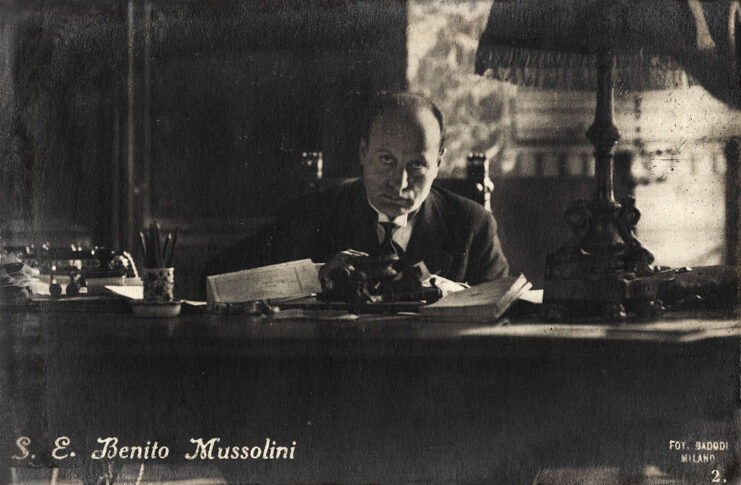
As the Second World War neared its end in April 1945, Benito Mussolini faced imminent defeat. On April 18, he traveled from Gargnano to Milan, hoping to negotiate with the Allies through the city’s Archbishop. However, his efforts were in vain, as the situation deteriorated rapidly. The Allies were closing in, and partisan uprisings were spreading across northern Italy.
During this period, Mussolini debated between making a last stand in the Alps, fleeing to Switzerland or negotiating a peaceful handover. On April 25, he attempted the latter with partisan leadership, but failed. That evening, the former Italian leader fled Milan with his mistress, aiming to escape to Switzerland.
However, his plans were thwarted when partisans intercepted his convoy near Dongo on April 27.
Benito Mussolini is arrested by partisan forces
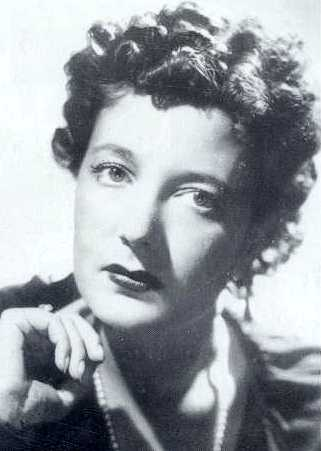
On April 27, 1945, Benito Mussolini and his mistress were captured by Communist partisans near Dongo, along Lake Como. The partisans, led by Pier Luigi Bellini delle Stelle and Urbano Lazzaro, stopped his convoy. The former dictator had tried to disguise himself with a Luftwaffe overcoat and helmet, and while this initially kept his identity a secret, a closer inspection ultimately led to his identification.
Mussolini was arrested “in the name of the Italian people” and taken to Dongo, where he spent part of the night. However, the partisans feared a rescue attempt by his Fascist supporters and moved him to a nearby farmhouse.
Mussolini’s capture was met with mixed reactions; while some saw it as a long-awaited justice, others feared the repercussions of executing such a high-profile figure. The news spread quickly, and the partisans were under pressure to decide the man’s fate. The Communist Party, which had significant influence within the partisan movement, advocated for his execution, and this ultimately led to the decision to execute the former dictator the following day.
Why was Benito Mussolini executed?
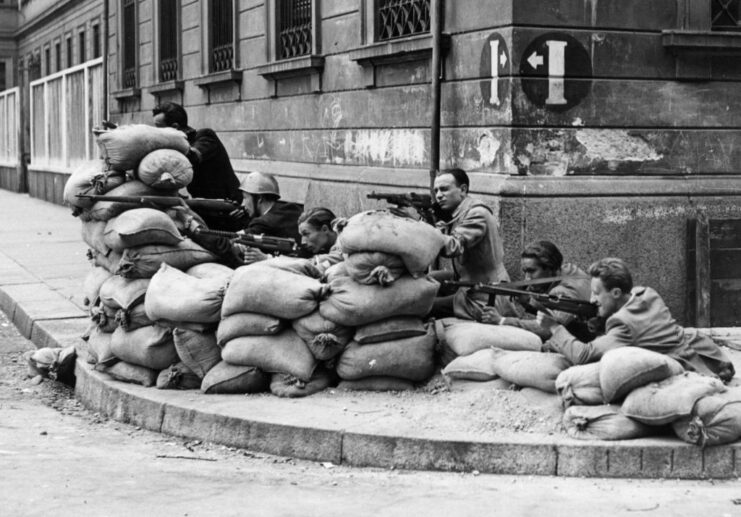
The decision to execute Benito Mussolini, rather than imprison him, was driven by several factors. Partisans saw him as a symbol of Fascist oppression and believed his death would prevent any future attempts to restore his regime. Additionally, there was a big fear Mussolini, if left alive, could become a rallying point for any remaining Fascist elements.
The political climate in Italy at the time was volatile, with the country transitioning from Fascist rule to a democratic government. The partisans wanted to send a clear message that this era was over. Executing Mussolini was seen as a way to cementing the new order and demonstrating that justice had been served for the atrocities committed by his regime.
There was also a practical consideration. The partisans were concerned that any trial would be lengthy and could lead to unrest or even attempts to rescue the former dictator. By executing him in a timely fashion, they aimed to avert potential complications and ensure a decisive end to his influence.
Execution of Benito Mussolini
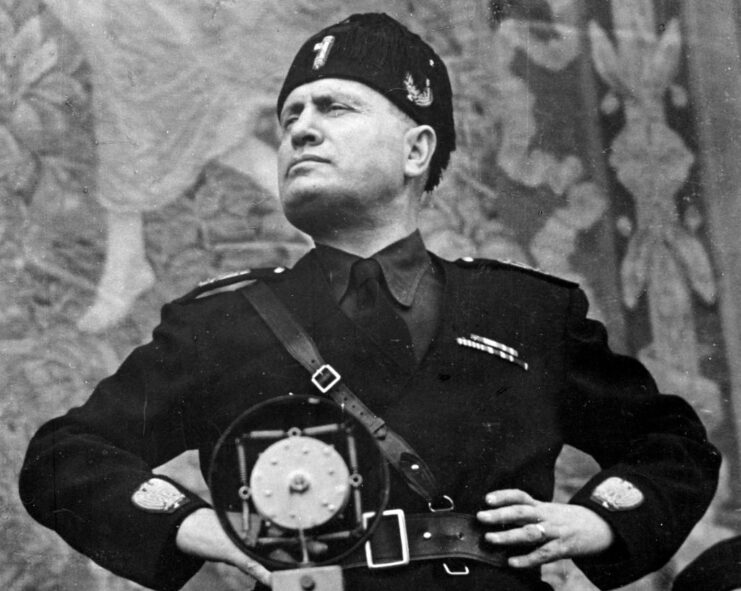
On April 28, 1945, Benito Mussolini and his mistress were executed in the village of Giulino di Mezzegra. While the identity of the individual who shot the pair with a submachine gun remains unknown, it’s believed to have been Walter Audisio, a Communist partisan. Mussolini’s last words were reportedly, “Shoot me in the chest.” The execution was swift, and the bodies were left at the site before being transported to Milan.
Mussolini’s body, along with that of his mistress and 14 other Fascists, were taken to Piazzale Loreto in Milan, where they were put on display. The location was symbolic, as it had been where partisans were executed by Fascists, under orders from the SS, the previous year. The deposed dictator’s remains were subjected to abuse from the crowd, reflecting the anger and resentment toward Mussolini and his regime.
That being said, public reaction to Mussolini’s execution was mixed. Many saw his death as a form of justice, but the manner in which it had happened and the subsequent public display of his body led to controversy and debate.
What happened after Benito Mussolini’s execution?
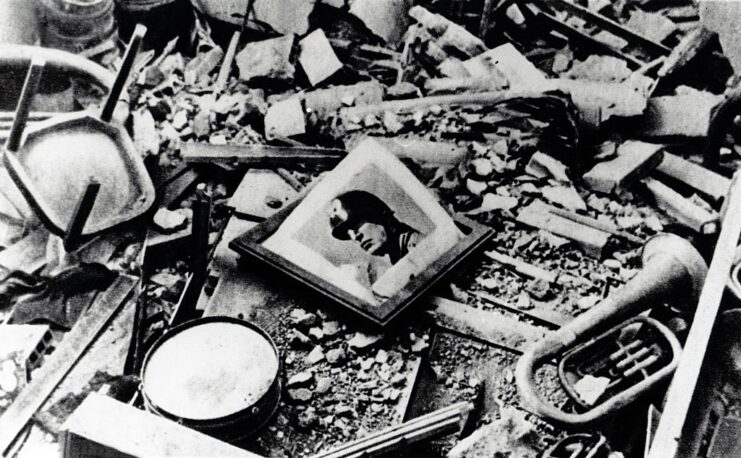
Following Benito Mussolini’s execution, Italy faced a period of reconstruction. The news of his death was met with relief by the Allies, who saw it as a significant step toward stabilizing the region, but the manner in which it occurred and the display of his body, as aforementioned, was met with great controversy.
The Führer, upon learning of Mussolini’s death, reportedly resolved to avoid a similar fate. This may have influenced his decision to take his own life shortly after and have his remains burned, as he sought to prevent his body from being subjected to any public humiliation.
More from us: Chiune Sugihara: The Japanese ‘Schindler’ Who Saved Thousands of Lithuanian Jewish Refugees
Want War History Online‘s content sent directly to your inbox? Sign up for our newsletter here!
The aftermath of Mussolini’s execution also saw the rise of Neo-Fascist movements in Italy. His unmarked grave was ransacked by three Fascists, who hide the deceased dictator’s body for 16 weeks, before it was located and hidden at a Capuchin monastery. He was then re-interred at his family’s tomb in Predappio, which has since become a site of pilgrimage for Fascist sympathizers.
The post How Did Benito Mussolini Die? The Demise of Italy’s Fascist Dictator appeared first on warhistoryonline.
How Did Benito Mussolini Die? The Demise of Italy’s Fascist Dictator
Philippines Truth
Post a Comment
0 Comments